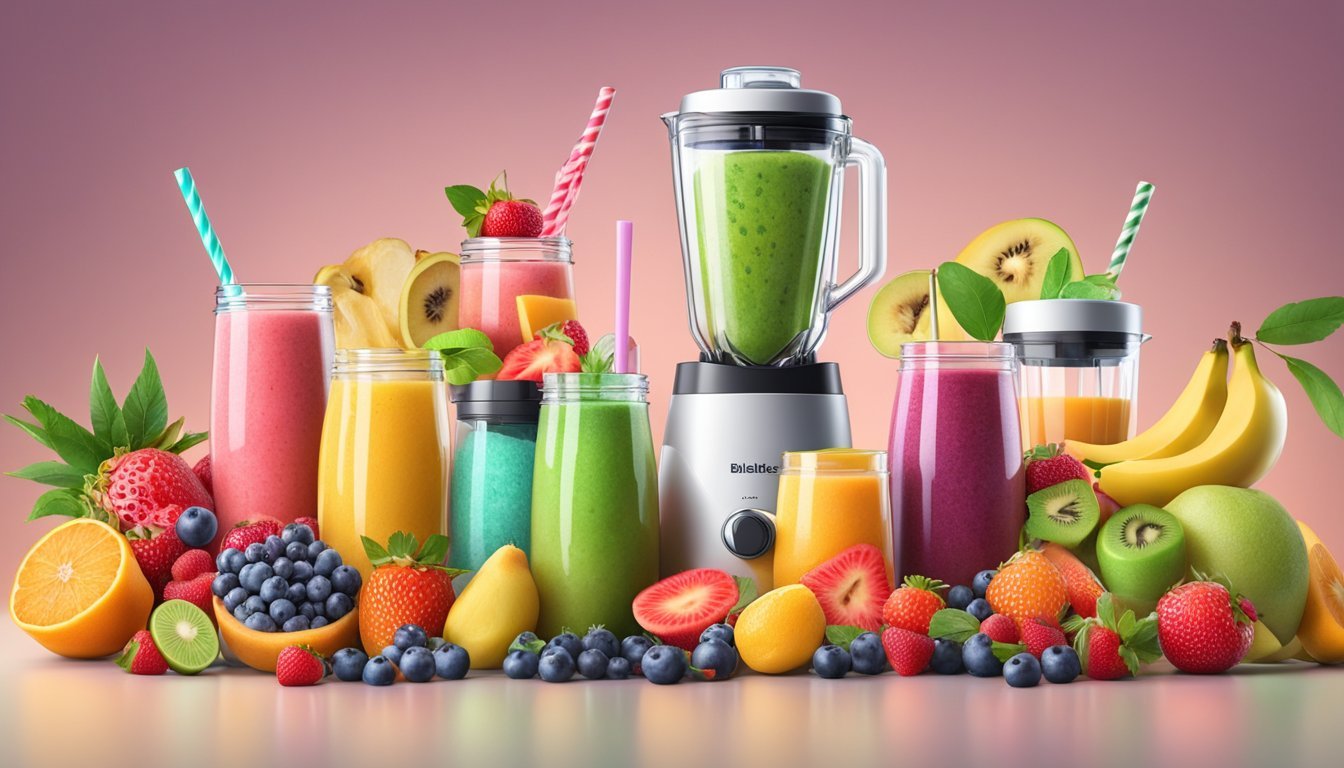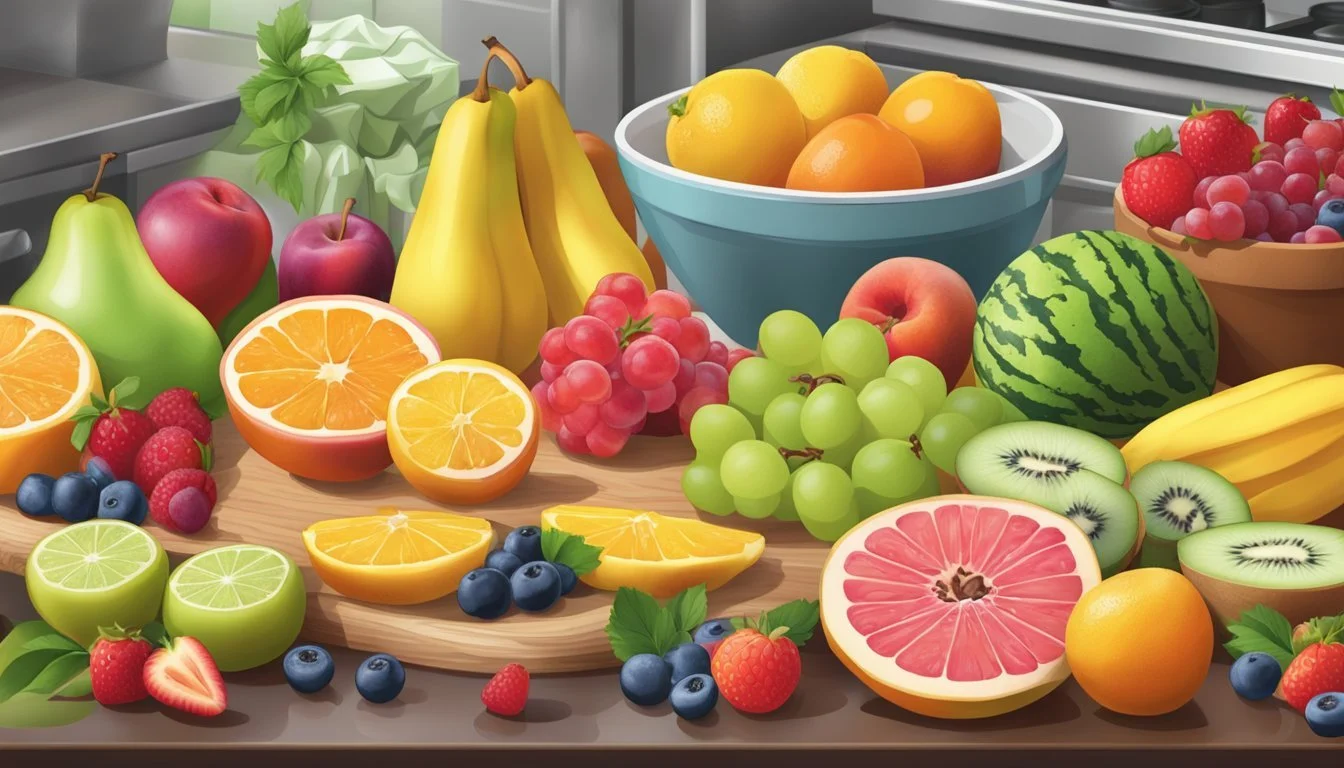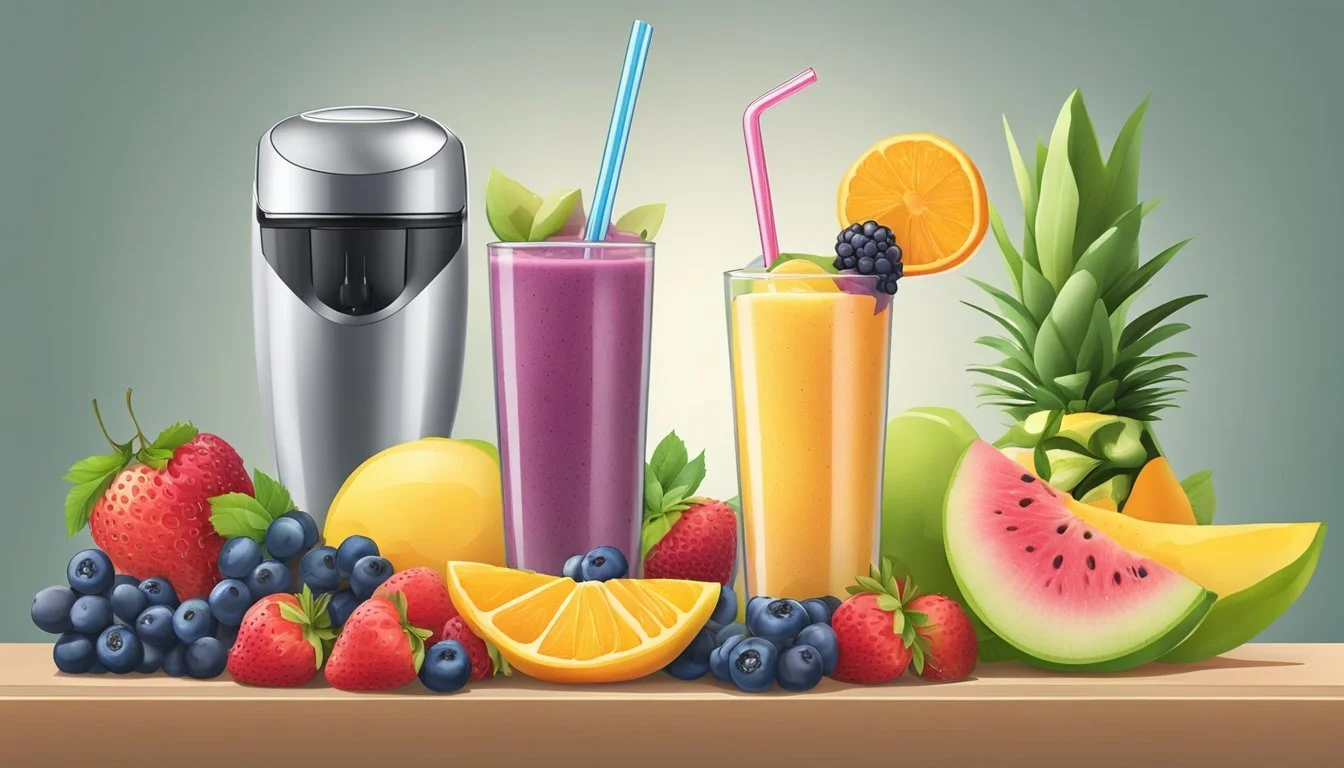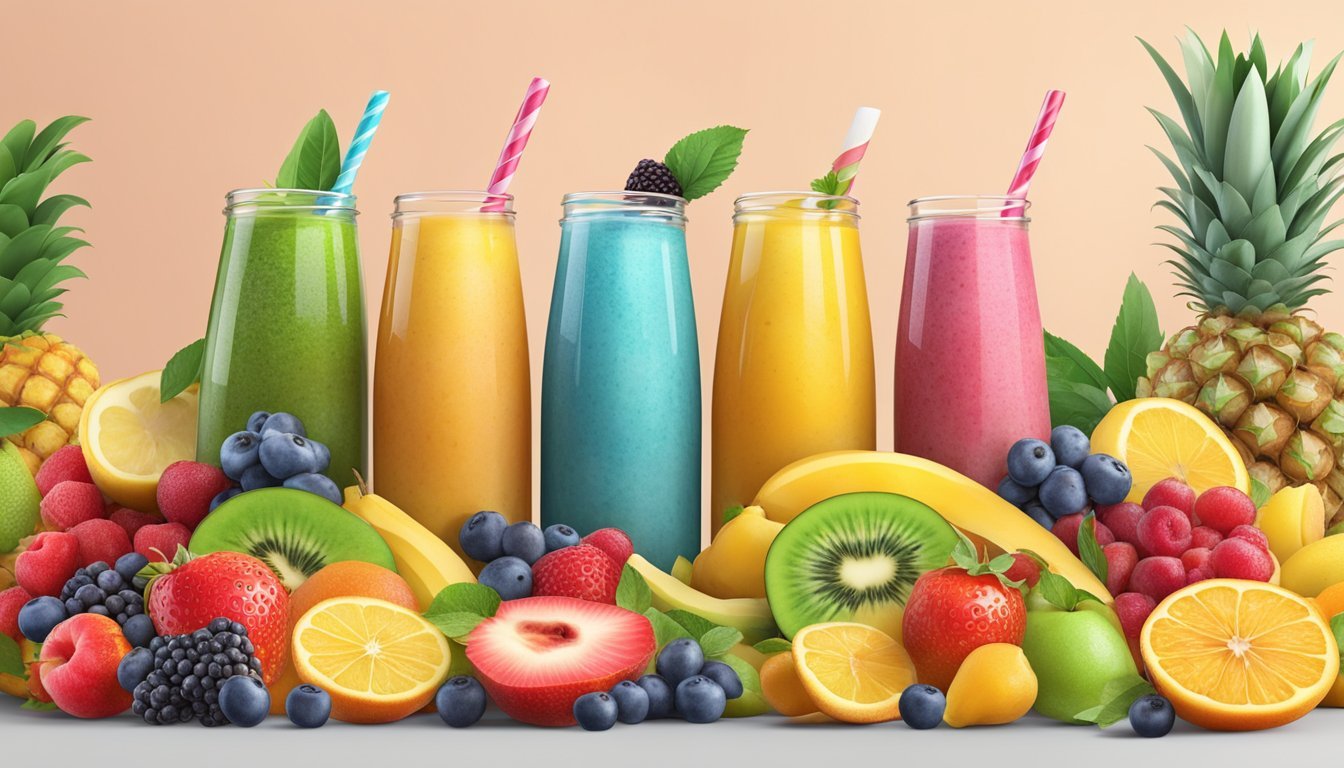Fresh vs. Frozen Fruit: Blending the Perfect Smoothie
Smoothies have become a popular breakfast and snack option, offering a quick and nutritious way to consume fruits. When making smoothies at home, many people wonder whether to use fresh or frozen fruit. Both fresh and frozen fruits can be excellent choices for smoothies, each offering unique benefits.
Fresh fruits provide vibrant flavors and natural sweetness to smoothies. They're readily available and can be used immediately after purchase. On the other hand, frozen fruits offer convenience and longer shelf life. They're pre-washed, cut, and ready to use, saving time during preparation.
Using a combination of fresh and frozen fruits can create an ideal smoothie texture. Fresh fruits contribute bright flavors, while frozen fruits add thickness and a satisfying chill without diluting the drink. This blend allows for a creamy consistency and balanced taste, making it a versatile approach for smoothie enthusiasts.
The Benefits of Using Fresh vs. Frozen Fruit
Fresh fruits offer vibrant flavors and crisp textures ideal for smoothies. They provide a burst of natural sweetness and juiciness that enhances drink quality.
Frozen fruits have several advantages for smoothie making. They create a thicker, colder beverage without the need for ice. This preserves the fruit's nutrients and flavor.
Both fresh and frozen fruits contain beneficial nutrients. Fresh fruits are rich in vitamin C, which can degrade during freezing. However, frozen fruits often retain higher levels of antioxidants.
Fiber content remains largely unchanged between fresh and frozen options. Both contribute to the nutritional value of smoothies.
Fresh berries add visual appeal with their bright colors. Frozen berries blend more smoothly, creating a uniform texture.
Convenience is a key benefit of frozen fruit. It's pre-washed, cut, and ready to use. This saves time and reduces food waste.
Cost-effectiveness can favor frozen fruits. They're often less expensive than their fresh counterparts, especially when out of season.
Texture preferences may influence choice. Fresh fruits provide chunks and varied consistencies, while frozen fruits create a smoother blend.
Choosing the Right Blender for Smoothies
Selecting an appropriate blender is crucial for creating smooth, delicious fruit smoothies. Power and blade design are key factors to consider.
High-powered motors, typically 1000 watts or more, can easily crush ice and frozen fruit. This results in smoother textures without chunks or graininess.
Blade configuration matters too. Look for strong, sharp stainless steel blades designed to create a vortex that pulls ingredients down for thorough blending.
Jar size and material are also important. Larger jars allow for bigger batches, while BPA-free plastic or glass are common options.
Some popular blender choices for smoothies include:
Vitamix 5200
Ninja Professional
Breville Fresh and Furious
Blendtec Total Classic
These models consistently produce smooth frozen fruit smoothies with ideal textures.
Personal-sized blenders can be convenient for single servings. The Nutribullet Ultra and Beast Blender offer portable options for on-the-go smoothie makers.
Preset smoothie functions can simplify the blending process. Many modern blenders feature programmed settings optimized for creating smoothies.
Consider noise levels if that's a concern. Some high-powered blenders can be quite loud during operation.
Ultimately, choose a blender that fits your budget and smoothie-making needs. With the right machine, you'll be able to blend ice and frozen fruits into perfectly smooth concoctions.
Base Ingredients for a Perfect Smoothie
Creating a delicious smoothie starts with selecting the right base ingredients. These components provide the foundation for texture, flavor, and nutritional value in your blended beverage.
Fluids: Milk, Juice, and More
Liquids form the smooth base of any great smoothie. Dairy milk offers a creamy texture and protein boost. Plant-based alternatives like almond, soy, or oat milk work well for those avoiding dairy. Coconut milk adds richness and tropical flavor.
Fruit juices bring natural sweetness and vitamins. Apple, orange, or pineapple juice complement many fruit combinations. For a lighter option, coconut water provides electrolytes with fewer calories.
Plain water can thin out thick smoothies. Green tea adds antioxidants and a subtle flavor. Experiment with different liquids to find your perfect blend.
Thickeners: Yogurt, Nut Butters, and Oats
Thickeners give smoothies body and a satisfying consistency. Greek yogurt adds protein and creates a creamy texture. It also introduces beneficial probiotics.
Nut butters like almond or peanut butter provide healthy fats and protein. They create a rich, indulgent flavor profile.
Rolled oats absorb liquid and thicken smoothies while adding fiber. They create a heartier drink that can serve as a meal replacement.
Frozen banana chunks or avocado halves also work as natural thickeners. They blend smoothly and contribute nutrients.
Sweeteners: Honey, Maple Syrup, and More
Natural sweeteners enhance flavor without relying on refined sugars. Honey offers antimicrobial properties and a distinct taste. It blends well with fruit and yogurt-based smoothies.
Maple syrup provides a rich, caramel-like sweetness. It pairs nicely with nutty or spiced smoothies.
Agave syrup dissolves easily in cold liquids. Its neutral flavor works in various smoothie combinations.
Dates add fiber along with sweetness. They're particularly good in chocolate or coffee-flavored smoothies.
For those watching sugar intake, stevia or monk fruit extract offer calorie-free alternatives. Use sweeteners sparingly to let natural fruit flavors shine.
Popular Fruit Choices and Combinations
Certain fruits blend exceptionally well in smoothies, offering a balance of flavors and nutritional benefits. These combinations can elevate your smoothie experience with complementary tastes and textures.
Berries and Tropical Fruits
Berries pair wonderfully with tropical fruits, creating vibrant and flavorful smoothies. Strawberries and mangoes make a delightful duo, combining sweet and tangy notes. Blueberries mixed with pineapple offer antioxidant-rich goodness with a tropical twist.
For a refreshing blend, try raspberries with coconut water. This combination provides a tart kick balanced by subtle sweetness. Adding banana to any berry mix enhances creaminess and natural sweetness.
Frozen berries work exceptionally well, maintaining the smoothie's cool temperature without diluting flavors.
Bananas and Stone Fruits
Bananas serve as an excellent base for many smoothies due to their creamy texture and natural sweetness. They pair particularly well with stone fruits like peaches, nectarines, and apricots.
A banana-peach smoothie offers a velvety consistency with a bright, summery taste. For added nutrition, blend banana with mango and a handful of spinach.
Frozen bananas can replace ice in smoothies, creating a thick, frosty texture. They also complement grapes and apples for a fruit-forward flavor profile.
Green Smoothie Ingredients
Green smoothies incorporate leafy vegetables for added nutrients. Spinach and kale blend seamlessly with fruits, their flavors easily masked by sweeter ingredients.
Avocado adds richness and healthy fats to green smoothies. Pair it with pineapple and banana for a tropical green blend. For a refreshing option, mix cucumber, green apple, and lime with spinach.
Frozen mango chunks work well in green smoothies, providing sweetness and a thick consistency. Adding berries to green smoothies can create appealing color variations while boosting antioxidant content.
Enhancing Nutritional Value
Smoothies offer an excellent opportunity to boost your nutrient intake. By incorporating specific ingredients, you can transform a simple drink into a nutritional powerhouse.
Protein and Fiber Additions
Protein and fiber are crucial for creating a satisfying and nutritious smoothie. Add a scoop of protein powder to increase muscle-building potential and promote satiety. Greek yogurt serves as another excellent protein source while adding creaminess.
For fiber, consider adding chia seeds or ground flaxseed. These tiny powerhouses not only boost fiber content but also provide healthy omega-3 fatty acids. Nuts like almonds or walnuts can add both protein and fiber, along with beneficial fats.
Oats are another fiber-rich addition that can thicken your smoothie and provide long-lasting energy. For a tropical twist, try adding shredded coconut, which offers fiber and a unique flavor profile.
Vitamins and Antioxidant-Rich Veggies
Incorporating vegetables into smoothies significantly enhances their nutritional value. Leafy greens like spinach and kale are packed with vitamins A, C, and K, as well as antioxidants. These greens blend easily and their taste is often masked by fruits.
Carrots add beta-carotene and a slightly sweet flavor. Beets offer vibrant color and are rich in folate and manganese. For a nutrient boost without altering the taste, try adding a handful of cauliflower florets.
Avocado can provide healthy fats and a creamy texture. It's rich in potassium and vitamin K. For an extra antioxidant punch, consider adding a small amount of matcha green tea powder.
Remember to balance flavors when adding veggies. Start with small amounts and adjust to your taste preferences.
Textures and Consistency in Smoothies
The texture and consistency of smoothies greatly impact the overall drinking experience. Different ingredients and preparation methods can yield varying results, from thick and creamy to light and refreshing.
Achieving Creaminess
Creaminess in smoothies comes from certain ingredients and techniques. Ripe bananas add natural sweetness and a smooth texture. Coconut milk or yogurt can enhance creaminess without overpowering other flavors.
Avocado is another excellent option for creating a silky mouthfeel. Its healthy fats blend seamlessly with other ingredients. For a dairy-free alternative, silken tofu provides a similar effect.
Blending time also affects creaminess. Longer blending breaks down fibers more thoroughly, resulting in a smoother drink. Start with 30-60 seconds, then adjust based on desired consistency.
Creating a Thicker Blend
Frozen fruit is key to achieving a thick smoothie texture. It acts similarly to ice, chilling the drink without diluting flavors. Strawberries, peaches, and mango work well frozen.
Adding a handful of ice cubes can further thicken the blend. This method is especially useful when using fresh fruit. For an extra-thick result, use less liquid or add oats or chia seeds.
Protein powders not only boost nutritional value but can also contribute to a thicker consistency. They absorb liquid and create a more substantial texture.
Blending technique matters too. Start on low speed to break down larger pieces, then increase to high for a thorough blend. This method helps incorporate air, creating a thicker, almost milkshake-like texture.
Smoothie Recipes and Flavor Ideas
Smoothies offer endless possibilities for delicious and nutritious combinations. From classic fruit blends to innovative creations, there's a smoothie to suit every taste preference and dietary need.
Classic Smoothie Recipes
Strawberry banana smoothies remain a popular choice for their sweet, creamy profile. Blend 1 cup frozen strawberries, 1 ripe banana, 1/2 cup Greek yogurt, and 1 cup milk for a satisfying treat. For a tropical twist, try a mango smoothie with 1 cup frozen mango chunks, 1/2 cup pineapple juice, and 1/2 cup coconut milk.
Green smoothies pack a nutritional punch. Combine 1 cup spinach, 1 banana, 1/2 cup Greek yogurt, 1 tablespoon honey, and 1 cup almond milk for a nutrient-dense drink. Berry lovers can enjoy a mixed berry smoothie using 1 cup frozen mixed berries, 1 banana, 1 cup apple juice, and 1/2 cup vanilla yogurt.
Innovative Combinations and Trends
Smoothie bowls have gained popularity as a more substantial meal option. Create a thick smoothie base and top with granola, fresh fruit, and seeds. Try a banana peach smoothie bowl by blending 1 frozen banana, 1 cup frozen peaches, 1/2 cup Greek yogurt, and a splash of milk until thick.
For a unique flavor profile, experiment with unexpected ingredients. A coffee-tahini smoothie combines 1/2 cup cold brew coffee, 1 frozen banana, 1 tablespoon tahini, 1 date, and 1/4 cup milk for a creamy, caffeinated treat. Add cocoa powder or cinnamon for extra depth.
Watermelon smoothies offer a refreshing option. Blend 2 cups frozen watermelon cubes with 1/2 cup frozen strawberries and 1 frozen banana for a light, sweet drink perfect for hot days.
Storing and Preserving Fresh and Frozen Fruit
Proper storage is crucial for maintaining the quality of fresh and frozen fruit for smoothies. Fresh fruit should be kept in the refrigerator to extend its shelf life.
For freezing fruit, start by washing and drying it thoroughly. Cut larger fruits into bite-sized pieces. Spread the fruit in a single layer on a parchment-lined baking sheet.
Place the baking sheet in the freezer for 1-2 hours until the fruit is solid. This method prevents the pieces from sticking together.
Once frozen, transfer the fruit to airtight freezer bags or containers. Label each package with the contents and date frozen.
Frozen fruits can be stored for 8-12 months while maintaining optimal quality. After this time, the fruit is still safe to eat but may lose some flavor and texture.
When storing frozen berries, follow the same process. These smaller fruits often freeze well without cutting.
To use frozen fruit in smoothies, add it directly to the blender. There's no need to thaw first, as this can lead to a mushier texture.
For a quick and healthy snack, partially thaw frozen berries by leaving them in the refrigerator for a few hours. They can then be enjoyed on their own or added to yogurt.
Serving and Consumption Tips
Smoothies offer a convenient and delicious way to boost nutrient intake. Proper serving techniques and nutritional awareness can maximize their benefits.
Best Practices for Serving
Serve smoothies immediately after blending for optimal taste and texture. Use chilled glasses to keep the drink cool longer. For a breakfast smoothie, pair it with whole grain toast or a small portion of nuts for added satiety. As a snack, serve in smaller portions to manage calorie intake.
Consider presentation for an appetizing experience. Use clear glasses to showcase vibrant colors. Garnish with fresh fruit slices or a sprinkle of chia seeds for visual appeal and added nutrition.
For on-the-go consumption, use insulated travel cups to maintain temperature. Shake well before drinking if separation occurs.
Nutritional Considerations
Smoothies can be calorie-dense, so portion control is key. A typical serving size is 8-12 ounces. Be mindful of added sugars from fruits or sweeteners.
Fruit smoothies are rich in carbohydrates, providing quick energy. They're typically low in cholesterol but can be high in natural sugars. To balance macronutrients, add protein sources like Greek yogurt or plant-based protein powder.
Many fruits offer potassium, supporting heart and muscle function. Berries provide antioxidants, while bananas add creaminess and additional nutrients.
For a more filling smoothie, incorporate healthy fats from avocado or nut butters. This can help with nutrient absorption and promote satiety.
Marketing Your Smoothie Creations
Effective marketing is crucial for smoothie businesses to attract customers and stand out in a competitive market. Social media platforms offer excellent opportunities to showcase colorful smoothie creations and engage with potential customers.
Instagram and Pinterest are ideal for sharing visually appealing photos of smoothies. Regular posts featuring new flavors, seasonal specials, and behind-the-scenes glimpses can build brand awareness and customer loyalty.
Facebook and Twitter allow businesses to share promotions, respond to customer inquiries, and build a community around healthy living. Encouraging customers to share photos of their smoothies can generate organic word-of-mouth marketing.
Partnerships with local fitness centers, yoga studios, or health food stores can help reach health-conscious consumers. Offering samples at community events or farmers markets introduces new customers to the product.
Email marketing campaigns keep loyal customers informed about new flavors, promotions, and health tips. Personalized offers based on purchase history can encourage repeat visits.
A loyalty program rewarding frequent purchases can incentivize customers to choose the business over competitors. Offering a free smoothie on birthdays or after a certain number of purchases builds customer relationships.










